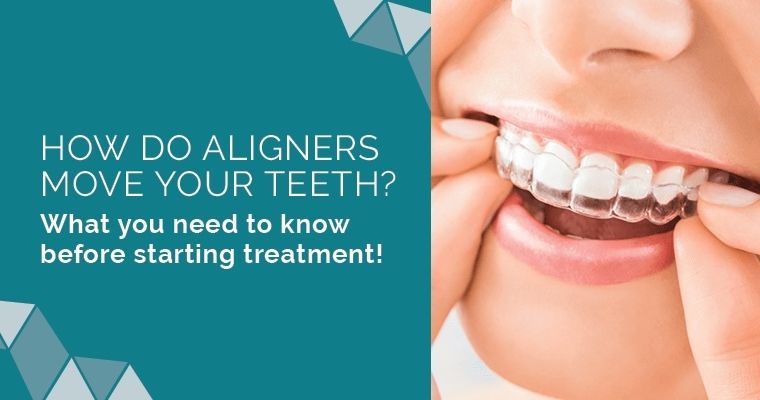Facts About Legacy Orthodontics Revealed
Wiki Article
About Legacy Orthodontics
Table of ContentsThe Best Guide To Legacy OrthodonticsNot known Details About Legacy Orthodontics The Greatest Guide To Legacy OrthodonticsLittle Known Questions About Legacy Orthodontics.Legacy Orthodontics Fundamentals Explained
In addition, we use adjustable therapy timetables, versatile repayment options and an enjoyable, delightful experience.An orthodontist is a dentist educated to detect, protect against, and deal with teeth and jaw abnormalities. Orthodontists function with people of all ages, from children to adults.
Malocclusion, or misaligned teeth, can cause oral issues, consisting of dental cavity, gum condition, and challenging or painful chewing. Not everybody is born with straight teeth. If you have a negative bite or huge spaces between your teeth, you might wish to get in touch with a dental professional specializing in orthodontic care.
Legacy Orthodontics Things To Know Before You Get This
( Photo Credit Rating: DigitalVision/Getty Images) Orthodontists utilize dealt with and detachable dental tools, like dental braces, retainers, and bands, to alter the setting of teeth in your mouth. Orthodontic therapy is for dental irregularities, consisting of: Jagged teethBite problems, like an overbite or an underbiteCrowded teeth or teeth that are as well much apartJaw misalignmentThe goal of orthodontic therapy is to improve your bite.A healthy bite ensures you can consume, eat, and talk effectively. While you could think of orthodontists as mostly for children or teenagers that require dental braces, they can deal with oral problems at any kind of age. Orthodontists participate in university, dental school, and orthodontic institution. After college graduation, they invest 2 or 3 years in an orthodontic residency program.
All orthodontists are dental experts, yet not all dental professionals are orthodontists. Orthodontic residency programs offer intensive, concentrated direction for oral specialists. They focus on 2 areas: Exactly how to correctly and safely move teeth Just how to effectively direct advancement in the teeth, jaw, and faceOnce an orthodontist has actually completed training, they have the option to end up being board licensed.
Unknown Facts About Legacy Orthodontics
Imbalance, or malocclusion, is the most usual reason individuals see an orthodontist. It is genetic and is the result of dimension differences between the top and reduced jaw or in between the jaw and teeth. Malocclusion leads to tooth overcrowding, an askew jaw, or irregular bite patterns. Malocclusion is usually treated with: Your orthodontist affixes steel, ceramic, or plastic square bonds to your teeth.If you have only minor malocclusion, you might have the ability to utilize clear dental braces, called aligners, rather of traditional braces (https://www.indiegogo.com/individuals/38096627). Some individuals need a headwear to help relocate teeth into line with stress from outside the mouth. After braces or aligners, you'll require to use a retainer. A retainer is a custom gadget that keeps your teeth in position.
They're most frequently used on kids. They can create extra room in the mouth without having to pull teeth. If you have a significant underbite or overbite, you may need orthognathic surgical procedure (likewise called orthodontic surgical treatment) to extend or shorten your jaw. Orthodontists utilize wires, surgical screws, or plates to sustain your jaw bone.
You might need to see an orthodontist if you have: Crowding or otherwise sufficient space for all of your teethOverbite, when your top teeth come your base teethUnderbite, when your base teeth are as well far forwardSpacing or concerns with gapsCrossbite, which is when your upper teeth fit behind your bottom teeth when your mouth is closedOpen bite or a vertical space between your front bottom and top teethMisplaced midline, when the center of your base and upper teeth do not align Remedying a dental malocclusion can: Make biting, chewing, and talking easierImprove the balance of our face and your overall appearanceEase pain from temporomandibular joint problemsSeparate your teeth and make them easier to cleanse, helping protect against tooth degeneration or visit our website cavities It's often a dental practitioner that first notifications misaligned teeth throughout a regular exam.
The Greatest Guide To Legacy Orthodontics

During your initial orthodontic assessment, you'll likely have: A dental examPhotos taken of your face and smileDental X-raysPanoramic (360 level) X-rays of your face and headImpressions to create molds of your teethThese examinations will certainly help your orthodontist know how to proceed with your treatment. leesburg orthodontics. An orthodontist is a dentist that's had training to treat your teeth and jaw
Orthodontists may execute surgical procedure, exams,X-rays,and more to help you obtain a more comfortable, healthier smile. An orthodontist is focused on your bite, so something like a broken tooth would be managed by a dental practitioner. Orthodontists are dental practitioners yet not all dentists are orthodontists. Orthodontists are concentrated on your bite, or the means your teeth meshed, and the straightness of your teeth. Ever wondered how celebs always appear to have flawlessly aligned teeth? Orthodontists are oral experts that concentrate on dealing with irregularities in the teeth and jaws.
Things about Legacy Orthodontics

While braces are one of the most frequently recognized orthodontic treatment, orthodontists have a diverse toolkit at their disposal. The certain method chosen depends on the severity of the situation, the individual's age, and individual choices. These tried-and-true braces use a system of brackets bound to the teeth and connected by cords.
Clear aligners, like Invisalign, are a prominent alternative for individuals looking for an extra very discreet therapy alternative. These removable trays are custom-made to progressively move the teeth's position. Headgear may be made use of in combination with dental braces or aligners to use extra targeted forces, particularly for remedying jaw inconsistencies. In cases of narrow jaws, palatal expanders can be used to create space for appropriate tooth placement.
Report this wiki page